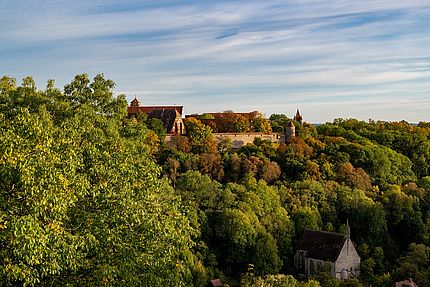EUROPE
Germany
Area: 357,022 km²
Geography: Germany has a temperate, wet climate. It is mountaineous in the South, has lowlands in the north and uplands in the center. Almost half of land under use is agricultural land. Agriculture accounts for 0.7 percent of the country's GDP, and 1.4 percent of jobs are in the agricultural sector. (CIA, 2022)
Land degradation: One of the main contributors to land degradation in Germany is the agricultural sector and in particular conventional farming practices. They lead to groundwater pollution, land-use change, soil compaction, an increasing risk of water and wind erosion and a loss of soil fertility. (UBA, 2022)
Sustainable Land Management: Following the German Sustainability Strategy, the Federal Government has set itself a goal of reducing new land use for settlements and transport to less than 30 hectares per day by 2030. In comparison, between 1993 and 2003, land consumption averaged 120 hectares per day. Another aim is to reduce harmful subsidies, such as the commuter allowance or the promotion of the development of greenfield industrial estates. (UBA, 2022)

ELD ACTIVITIES
-
ELD-FÖS Case Study (2024)
Title: Repurposing agricultural subsidies: Funding nature by greening financial flows
Content: The central contribution of this study is a new perspective on the reform of environmentally negative financial flows – to reduce negative environmental impacts while repurposing them to increase funding for nature and thus positive impacts. This study therefore outlines three different levers that can be used to finance investments in nature: Reducing tax benefits that have negative environmental impacts; increasing the “green” share in public spending on agriculture and internalizing negative external effects (from fertilizer overuse or pesticides) while raising revenue. Taking the example of German financial flows, three reform packages are developed to show how such reforms could look like and what the impacts of reforming subsidies as well as the impacts of increased funding for nature would be.This report builds on the global State of Finance for Nature 2023 report that identified the repurposing of harmful subsidies as one of the key levers for sustainable development.
The study is implemented together with the Forum Ökologisch-Soziale Marktwirtschaft (FÖS).
- Report: EN
CONTACT
ELD Secretariat
E-Mail: info@eld-initiative.org
